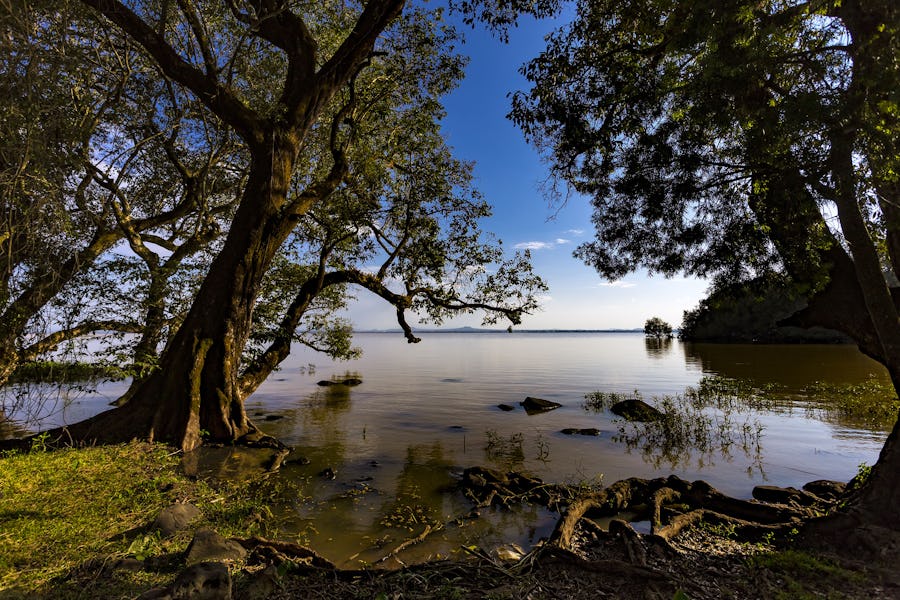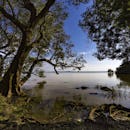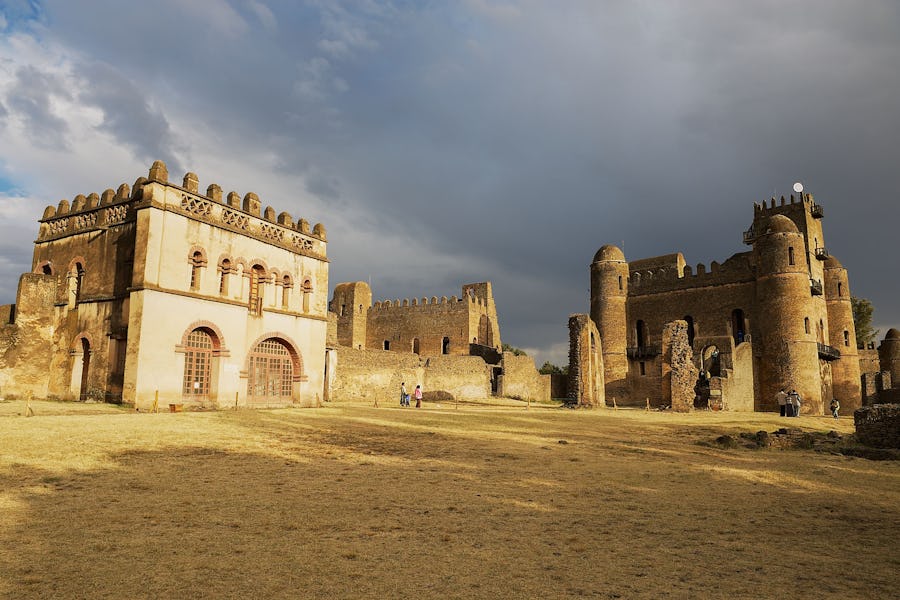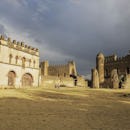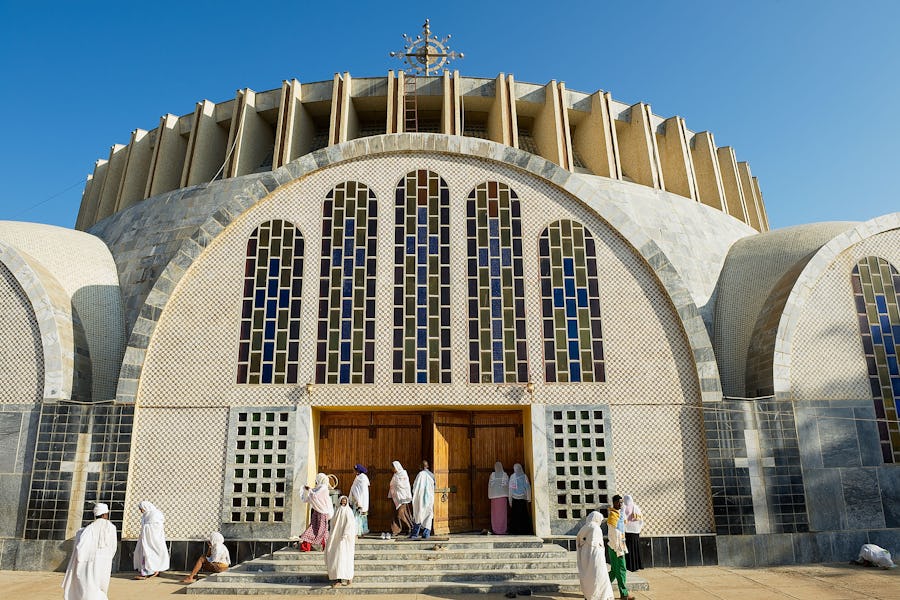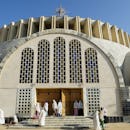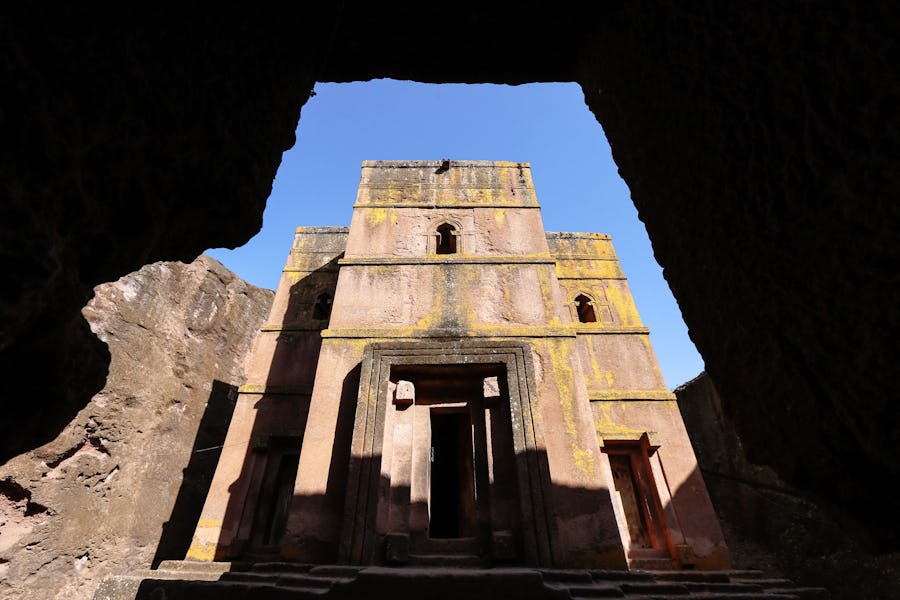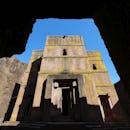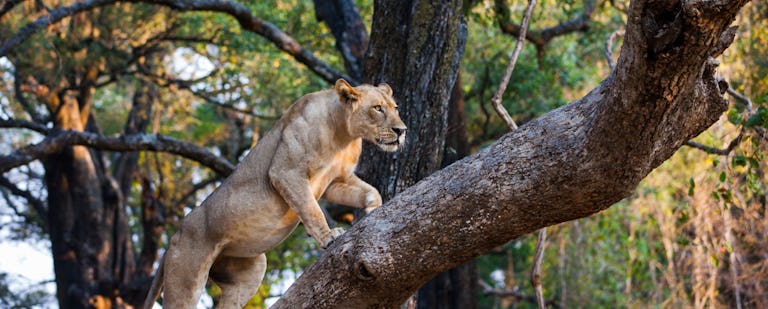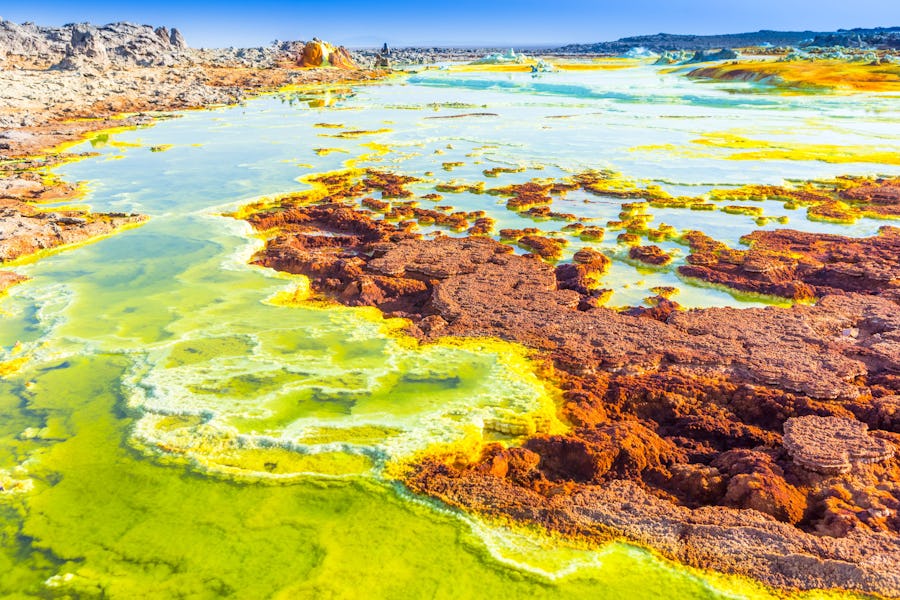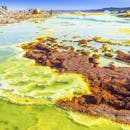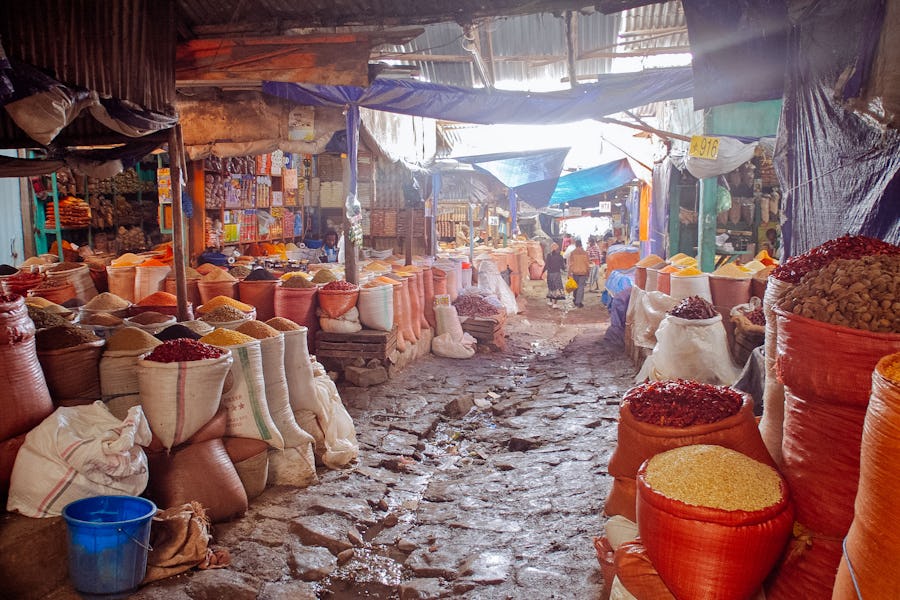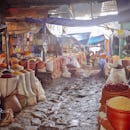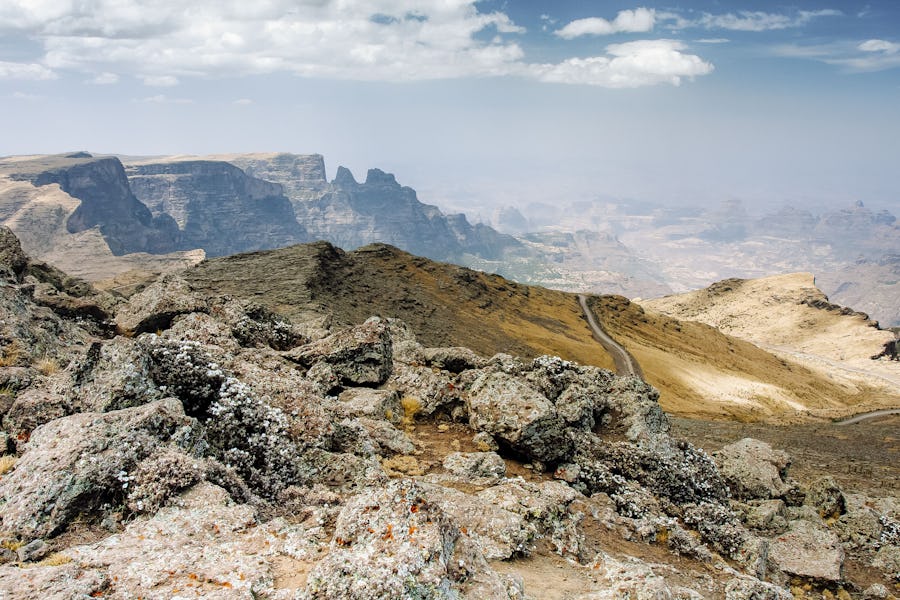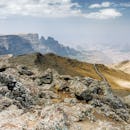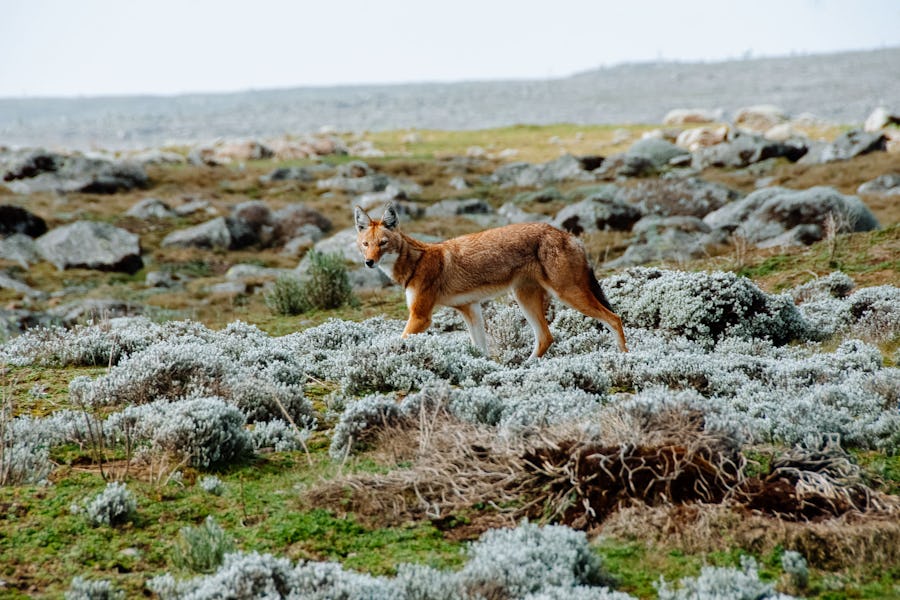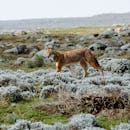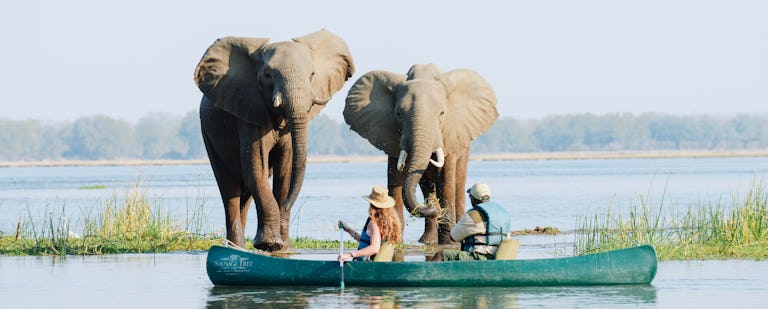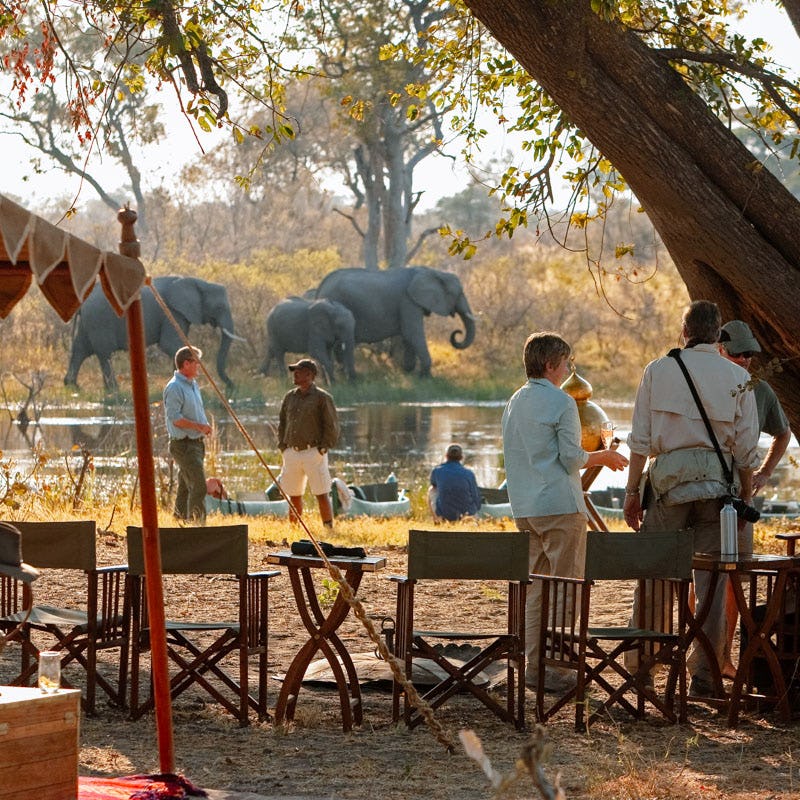For the last few years, travel guides all over the world have named Ethiopia as one of the top destinations on the planet to visit. It’s Africa stripped bare of the Big Five and instead, brims with history and pulsates with exhilarating energy. There are rock-hewn churches to marvel at, medieval forts and UNESCO-ruins to explore, landscapes that will knock your socks off, and, if you’re hankering after a spot of wildlife-watching, that can be arranged too. But despite a list of near-endless wonders, there’s remarkably little information out there for potential travellers. Welcome, then, to our Ethiopia travel guide – a one-stop shop for the country’s highlights and how they might fit in to your trip…
Ease yourself into Ethiopia in Bahir Dar
The first place in our Ethiopia travel guide just so happens to be the first stop on the country’s popular historical circuit (that also includes Lalibela and Gondar), Bahir Dar. The bustling town is sometimes referred to as the ‘Ethiopian Riviera’ thanks to its pretty location on the southern shores of Lake Tana and it’s a relaxed introduction to the sights and sounds of the country. It’s also within walking distance of the outlet of the Blue Nile and short drive will take you to the Blue Nile Falls, a Victoria Falls-esque cascade of water that’s most impressive just after the rainy season ends in October and November. Make sure to leave time also for a boat trip around the lake and to the vibrant, 14th century monasteries that adorn the forested peninsulas and islands.
For first-timers, check out the route ‘The Best of Northern Ethiopia’ – it’s great way to get to grips with Ethiopia’s intriguing history and take a first plunge into the country.
Stroll around Gondar, the Camelot of Africa
Continuing with the historical circuit, we’re off to Gondar next in our Ethiopia travel guide. Have your camera at hand for the drive in from Bahir Dar as the scenery definitely deserves a photo or two – and don’t put it away when you arrive! Once the Royal capital of Ethiopia, the Portuguese-influenced churches and castles of Gondar are stunning, with the fascinating Debre Birhan Selassie church the aesthetic cherry-on-top. The ancient city combines well with Bahir Dar, Axum and Lalibela if you’re a true culture-vulture, but it’s also the springboard for trips into the Simien Mountains if you’d like to add a spot of wildlife-watching or trekking to your trip.
Gondar also features in ‘The Best of Northern Ethiopia’ route, but wildlife-lovers might like to use ‘The Full Works’ route that also includes the Simien Mountains as a starting point for designing a trip.
Travel back in time in Axum
The next ancient gem that truly deserves a place in both the northern historical circuit and our Ethiopia travel guide is Axum in the spectacular Tigray region. Why? It’s the birthplace and holiest city of the Ethiopian Orthodox church and wandering the streets truly feels like stepping back in time to the Old Testament. A tour is probably the best way to explore the sights, and your guide will take you to the stelae park (1,700-year old upright stones, the tallest of which is a staggering 23 metres high!), St Mary’s church, the ruins of the Queen of Sheba’s palace and, of course, the resting place of the Ark of the Covenant. Axum is a 1 hour 20-minute flight from Gondar and, depending on what time of day you arrive, most people only spend a night, sometimes two, in the city.
Our route, Ethiopia: The Full Works, incorporates a stop in Axum alongside the Simien Mountains for a comprehensive exploration of Ethiopia. It’s also possible to add-on a stop in the Bale Mountains (see below) if you fancy upping the wildlife ante.
Let Lalibela take your breath away
Of all Ethiopia’s treasures, Lalibela is probably the one you’ve heard of. Home to the famous rock-hewn churches, it’s the jewel in the country’s crown and regarded by many as the unofficial eighth wonder of the world. Despite the photos and stories you may have heard, it will take your breath away when you see it for the first time and the size and scale of the hand-chiselled buildings is unprecedented. Many of the churches are grouped together in the central complex, connected by a warren of tunnels and trenches, and are best visited during morning mass when thousand-strong crowds come from near and far to worship. As for timings, we’d recommend spending at least two nights in Lalibela with the second day reserved for visiting Genete Mariam, one of the most interesting churches in Lalibela’s outlying area.
Most people will fly into Lalibela (an hour from Addis and about 90 minutes from Gondar) making it easy to include on just about any Ethiopia trip – and we suggest you do!
Feel the heat in the Danakil Depression
Head even further north, almost to Ethiopia’s border with Eritrea, and you’ll reach the mighty Danakil Depression. It’s famously one of the hottest places on earth and also the lowest at a staggering -116 metres below sea level and although both make for a slightly strenuous trip (!) don’t let either put you off. Awaiting are magnificent, otherworldly landscapes of bubbling lava lakes and sulphurous pools, luminous yellow ponds and blood red rocks like nothing else on earth. When you’ve finished marvelling at the scenery, watch the nomadic Afar people move across the plains, digging for salt and then climb to the top of Erta Ale, literally translated as the ‘smoking mountain.’ At the top is one of only six lava lakes in the world and to stand on the crater rim, peering into the ever-swirling pools of lava below, is to be transported to a different world.
Independent travellers cannot access Danakil by themselves so a two- or three-day mobile safari (with one night camping at the top of Erta Ale) is the order of the day. Use the route ‘Exploring the Danakil Depression’ as a starting point for designing your Danakil adventure!
Discover the hidden gems of Addis Ababa
The capital city and the headquarters of the African Union, you’ll probably find yourself in Addis Ababa at some point on your Ethiopia trip. The city is a contradiction in every sense of the word and it’s frenzied yet remarkably relaxed, innovative yet traditional, and it’s not unusual to see herds of cows roaming between glittering office buildings. Like most East African cities, tourist attractions are few and far between but there’s a few stops worth making: the beautiful Medhane Alem cathedral, the remains of ‘Lucy’ in the National Museum, and the fascinating Red Terror Martyr’s Museum. But really, the best way to explore Addis is a good old-fashioned wander through the streets, past the trendy jazz bars, sweet-smelling coffee shops and chic boutiques.
Addis is the starting point for pretty much every trip to Ethiopia and it’s well-connected by air to most major cities in Africa and many in Europe. Accommodation-wise, Addis isn’t famous for its boutique hotels, but there are a couple of larger hotels that suffice for a couple of nights. The Sapphire Addis Hotel, the Hilton Addis Ababa and the Capital Hotel & Spa are among the best.
Have your trekking poles at the ready in the Simien Mountains
Home to Africa’s third-highest peak, Ras Dashen, that stands at an impressive 4620 metres above sea level, the Simien Mountains definitely deserve their moniker ‘The Roof of Africa.’ This is prime trekking territory and you can embark on anything from casual strolls through the montane scenery to week-long expeditions across precipitous peaks. But it’s not just for avid hikers; the mountains are home to wildlife not seen anywhere else on earth including the handsome walia ibex (a sort of wild goat) and enormous troops of golden-maned (and shrieking!) Gelada baboons. Accommodation-wise, there’s Simien Lodge and the stylish Limalimo Lodge, two upmarket hideaways that offer game drives and walks and will appeal to the most comfort-conscious of travellers.
Day trips to the Simien Mountains can be easily arranged from nearby Gondar, but if you’d like to stay for longer and make the towering highlands a feature of your trip, check out The Wildlife Highlights of Ethiopia route. The best time of year for trekking are the drier months of October to March.
Walk on the wild side in Bale Mountains National Park
Ethiopia’s ‘other’ national park is the beautiful Bale Mountains, six hours by road to the southeast of Addis. The landscape is fit for a fairy-tale and the undulating, pastel plateaus are filled with giant lobelia flowers and scattered with fragrant juniper forests. Importantly, it’s the last remaining stronghold of the Ethiopian wolf, which are now thought to number less than 500 in the wild, and one of the most magical places to see them. Other wildlife ticks include mountain nyala, endemic to southern Ethiopia, giant mole-rats, the Bale monkey, and a multitude of birds. In fact, the African Birding Club recently named Bale as the continent’s fourth-best birding site! And that’s what makes the six-hour drive worth it…
Pretty much the only way to reach Bale is by road from Addis and as the park isn’t particularly close to any other major sights, it requires a few extra days as an add-on. This route, The Wildlife Highlights of Ethiopia, combines Bale with Simien for a real wildlife extravaganza, but it’s possible to add on a visit to a classic northern circuit in Ethiopia: The Full Works.











